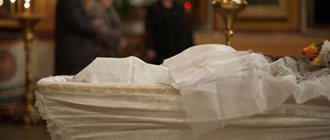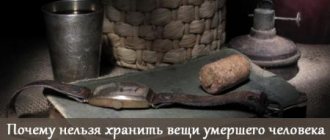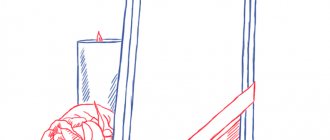The spiritual duty of descendants is to keep the graves of relatives clean and tidy, while observing church canons and recommendations. Thus, according to one of the Orthodox traditions, after the burial of the deceased, an eight-pointed cross is installed at the burial site, symbolizing humility, forgiveness and faith. However, in most cases, after 10–12 months from the date of burial, a tombstone is installed and the cross is dismantled. In this regard, many people have a question: what to do with the cross, where to put it? Before answering this question, let’s find out what this ritual item symbolizes and why it is placed on the grave after the funeral.
The position of the church and the moral and ethical aspect
From the point of view of the Christian church, the cross is one of the key symbols of faith. This is a shrine. This is the personification of the crucifixion of the Son of God, who accepted death in the name of atonement for human sins. Jesus died to give people hope of eternal life. Even without asking the opinion of the clergy, it is easy to guess that the shrine has no place in the trash heap. So, you definitely can’t throw away the cross. Unfortunately, many people do just that. Usually this happens not out of malice, but out of ignorance.
What does a cross on a grave symbolize?
The cross is a symbol of faith. It was carried to the East to convert infidels to the Christian religion, and the Savior was crucified on it. They are installed on graves to emphasize the deceased’s affiliation with the Christian religion. Muslims do not install crucifixes; their faith is symbolized by a crescent moon.
The presence of a cross for a believer is mandatory. If a wooden or metal crucifix placed immediately after the burial ceremony is found redundant and is replaced with a memorial headstone, the creed will still appear on it.
Christians are buried with their heads to the West and their faces to the East. This is how Jesus Christ was buried and it is in the East that he, like the morning star, will rise again. This means that all believers will be able to immediately see the resurrection and rise for the Last Judgment.
The shape of the crucifix also matters:
- Greek is shaped like the letter "T";
- Orthodox has eight ends.
The eight ends of the Orthodox cross represent the 8 stages of human life on earth; it has been used since the end of the 6th century.
Link to the fortieth memorial day
In Soviet times, when special observances were not observed, a tradition arose of laying flowers made of light fabric or paper on graves. Today, funeral wreaths are made of plastic, which significantly extends their service life. These funeral attributes can be left in the open air without damaging their appearance for several months and even years.
People who are deeply religious, when asked when they remove wreaths from a grave after a funeral according to church canons, usually answer: by the fortieth day after burial. In fact, there are no strict church rules on this matter.
When to dismantle?
As we have already said, removal is carried out after the earth settles. And this is in about 10-12 months. Religious symbols should be dismantled in the summer so that the ground is soft and dry. And the problem is not so much in dismantling, but in installing a new granite monument.
It's better to pre-order and wait for it to be installed. This is 30-40% cheaper than ordering in the year of installation. After all, prices will rise during the season, and the queue will be quite long. The monument manufacturer makes big discounts because it prefers to keep production busy in the winter.
Is it possible to pick up someone else's cross?
For a believer, a pectoral cross is an individual thing. It is believed that you should not give it to other people, especially your own, otherwise you will bring trouble on yourself. However, the priests say that there is nothing wrong with such a gift. The main thing is that it is done from the heart.
Interesting materials:
How did Roy Jones lose? How to show video on TV from iPhone? How to send a photo to Odnoklassniki from a tablet? How do you measure relative humidity using an Augustus psychrometer? How to get from Tushinskaya to Krasnogorsk? How to mount a horse in Minecraft? How to get into tall cars? How does a plane stay in the air? How to disassemble iPhone 7 yourself? How to charge your car battery yourself?
What to do with the cross after installing the tombstone?
Until the product rots or breaks:
If by the time the monument is installed the cross has not rotted or broken, it is recommended to place it behind the tombstone
. In most cases, this is how they do it. To increase its service life, it should be treated with a special protective solution (for example, Aquatex impregnation). This product is inexpensive, relatively easy to use and quite effective.
Photos of monuments with a cross behind the tombstone
Monument with a large black granite cross and a short epitaph
Granite monument with a handmade portrait and a standard set of engravings
Large monument of black and brown granite with a long epitaph on the tombstone
Granite monument with photoceramics and a standard set of engravings
Photos of monuments with a wooden cross at the burial site
All photographs used on this page depict monuments manufactured by our company. To see photos of our other works, follow the link - photos of tombstones made of granite and marble.The cross is not a hindrance to the monument
Often loved ones cannot decide whether to install a monument at the burial site or leave the old wooden cross. Each option has many advantages. Advantages in the first case:
- a monument made of stone or iron will last much longer;
- the new monument is stronger than the previously installed temporary one, which means it will better withstand the effects of negative external factors;
- does not require maintenance (at least minimal care, there is no need to regularly repair or paint, as is done in the case of a cross).
The disadvantage of this option is the high price, significant weight, so you need to wait until the earth can settle sufficiently. But even some time after the installation of the monument, sometimes unforeseen situations arise, for example, if groundwater rises, the tombstone becomes askew due to the significant weight and loose soil. In this regard, the advantages of using a wooden cross are also evaluated:
- light weight;
- ease of manufacture and installation;
- a more obvious symbol of faith than an engraving on a stone tombstone;
- acceptable cost.
But wood can rot with frequent and prolonged contact with water. Over time, the shade of the product changes and cracks appear. To prevent such consequences, you need to regularly care for the cross.
Is it possible to wear someone else's pectoral cross?
Archpriest Alexander Lebedev believes that being afraid of a found pectoral cross because the sins of a person who has lost his symbol of faith will be passed on to another is nonsense, which is easier to invent than to comment on.
To the question: “Is it possible to wear another person’s cross?”, it is enough to also ask yourself: “How can one’s own passions, which belong exclusively to a specific person and give only her the exclusive right to fight her sins, pass to an innocent person? , which, of course, has enough of its own mistakes.”
Orthodox crosses
In addition, everyone receives their own burdens in life, which must be borne with patience and gratitude, because the Lord sends trials to heal the soul. Everyone asks in their prayers: “Lord, have mercy,” which in Greek sounds like “Kyrie elaison.” Elaison translates to “oil,” and olive oil is the world’s first human medicine.
It is impossible for a pectoral cross, which was found and put on, to influence the character of a person, to add sins or to get rid of them, and also in some magical way to draw a line of life’s path.
Important. Orthodoxy is, first of all, sanity, and no actions that are not related to a person’s personal, conscious actions, good or evil, can change a person’s personality or influence the life events that happen to a person.
You should not be afraid of the found cross, since the cross is a shrine, and not a pagan amulet. Ever since Christ was crucified for our salvation, the pectoral cross has protected a person from evil spirits in the same way as the sign of the cross. Another person who wore it and lost it cannot change its purpose as a protective force against evil.
Therefore, all signs associated with it are superstition.
About superstitions:
- Everyday superstitions
- What to do if you find an icon on the street
- Is it possible to tell fortunes at Christmas?
Recycle
Over time, when the welded cross has become rusty and the wooden one has become unusable, it is recommended to dispose of the tombstone. The metal is usually cut into several pieces with a grinder and buried around the perimeter of the grave. You can do the same with wood or simply burn it. They do the same with the sign - they dig it in here or burn it outside the graveyard. If it is still in good condition and there is free space on the permanent headstone, it is perfectly acceptable to attach it to the back or base of the memorial slab.
What you can and cannot do with a grave cross
A crucifix with a photograph or with a tablet with inscriptions from Holy Scripture is often buried on the grave for a while (before the monument is erected). After receiving permission from the cemetery administration to install the tombstone, it is removed.
What to do
Cross needed:
- carefully dig up;
- lay it next to the grave and cover it with grave soil (you can cut it and build something like a fence).
If the crucifix is wooden (Jesus' cross was made of oak), then it is recommended to burn it and scatter the ashes over the grave.
Do's and Don'ts
The crucifix, if it is well preserved, can be given to poor people who do not have the means to buy it for the grave of a relative. If there are no poor people in the area, the cross is taken to the church or the cemetery workers are assigned to dispose of it.
It is prohibited to take crucifixes to a landfill or throw them away outside the cemetery. This is considered a great sin.
Which cross is considered Orthodox?
For a Christian, the basic key aspects are important. The cross should be:
- four-, six-, eight-pointed forms;
- with the inscription “Save and Preserve” on both sides, and not with decorative stones (preferably, as a recommendation from the priests), simple, not inlaid with precious stones are recommended for children;
- purchased in a church, then it is already consecrated; if purchased in a jewelry store or found, it must be consecrated by any Orthodox priest;
- The material of manufacture does not matter. And also how the size is not important, except that it is better for kids to wear small crosses without sharp corners.
Advice! A person receives a cross during the Sacrament of Baptism, but it happens that the symbol of faith can be lost. You shouldn’t treat this dramatically and superstitiously wait for some kind of trouble, you need to go to the temple and buy a new one.
What to do with a metal cross
Metal crosses are welded from angles or rolled profiles. They can last for decades. After the monument is installed, such a cross is most often left in place. It will have to be tinted periodically, and weather-resistant paints are used here.
It is customary to paint a metal or forged cross black. Kuzbaslak is suitable for this purpose. It reliably prevents rust for seven to nine years. After this period, repainting will help preserve the steel crucifix.
Metal crucifixes are also coated with “serebryanka” - a solution of aluminum powder in weather-resistant varnish. Such a coating hides possible manufacturing flaws and also gives the cross a rather noticeable appearance. In bright sunlight, it reflects light, creating a self-luminous effect.
What to do with the cross after installing a monument on the grave of a deceased relative: the priest’s answer
Father Vladimir Priest It is unacceptable to send holy attributes to a landfill. Firstly, this is a manifestation of disrespect for God, faith, and the Church. Secondly, there is no need to take anything from the grave; it is better to bury it in the ground; the last option is burning. If relatives do not know what to do with ritual attributes, you can ask the local church priest for advice or contact the churchyard workers. There are several options, all of them are acceptable for a believer and will not harm the soul. But it is also important to remember that the cross cannot be thrown into a landfill or left on the ground, regardless of the reason: be it a ritual attribute in a cemetery or a piece of jewelry found on the street.
The tradition of placing a cross on a Christian's grave
On the graves of Orthodox believers, crosses (crucifixes) are placed where the feet of the deceased are located. This is due to the fact that the deceased must see him constantly. The crucifix is a support and consolation for the soul of the deceased, helping to reconcile him with the fact that he had to die. Catholics most often place crosses at the head of the grave (in the past they were placed at the head only at the resting places of soldiers and war veterans, people who, even after death, would have the strength to lift and carry the crucifix at the moment of resurrection). It is believed that the resurrected person will pick it up and carry it like a banner, illuminating his path and driving away evil forces. The cross becomes a symbol of victory over the devil.
The Russian Orthodox Church does not prevent believers from placing the crucifix as they see fit. But in Russia, placing it at the head of the grave is not often practiced.










